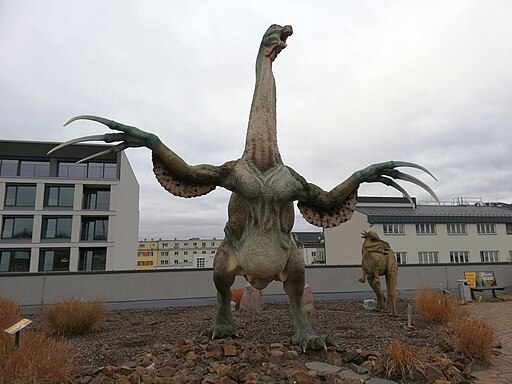The Giant Clawed Dinosaur
Therizinosaurus was an extraordinary dinosaur that lived during the Late Cretaceous period, about 70 million years ago.

| Meaning | Scythe lizard [Therizino-saurus] |
| Pronunciation | ther-uh-ZEEN-oh-sore-us |
| When: | Late Cretaceous (about 70–66 million years ago) |
| Where: | Asia (Mongolia) |
| What: | Theropod (herbivorous or omnivorous, known for its large claws) |
| Weight: | Estimated around 3–5 metric tons |
| Length: | Approximately 10–12 meters (33–39 feet) |
| Diet: | Likely herbivorous or omnivorous (ate plants and possibly small animals) |
| Discovered: | First described by Evgeny Maleev in 1954 |
This unique dinosaur is famous for its enormous claws, which could grow up to 1 meter (3.3 feet) long.
These claws were among the largest of any animal and are thought to have been used for defense and foraging for plants.
Therizinosaurus belonged to a group called therizinosaurs, which were unusual theropod dinosaurs.
Unlike most theropods that were carnivorous, therizinosaurs were primarily herbivorous.
Therizinosaurus had a long neck, a small head with a beak-like mouth, and a pot-bellied body.
It walked on two legs and had large, powerful arms to help it reach and pull down vegetation.
Despite its fearsome appearance due to its giant claws, Therizinosaurus was likely a slow-moving herbivore that used its claws to strip leaves from trees and bushes.
